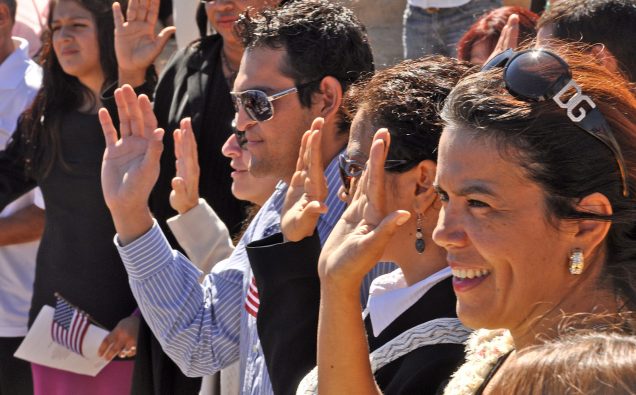
During the last five years, immigrants arriving in the United States have come with higher percentage of college education and English proficiency than previous generations who moved to the United States.
Around half of the recently arrived immigrants have a bachelor’s degree – marking a change from the immigrants who came to America by 2010.
The upward trends in educational attainment of new immigrants may speak to changing economic dynamics and new forms of AI-powered growth. The 20th century has seen many immigrants leading some of the most innovative and successful IT companies.
The new revelation in a Pew Research study comes amid a divisive debate on immigration that has been at the center of politics since the inception of President Donald Trump presidency. President Trump recently unveiled a proposal to fix the immigration, calling for expansion in the number of highly skilled immigrations.
“Recently arrived immigrants have markedly different education, income and other characteristics from those who have been in the U.S. for more than a decade. Proposed changes to U.S. immigration laws could favor highly skilled immigrants, which could further change the demographics of the nation’s foreign-born population. U.S. adults support encouraging highly skilled people to immigrate and work in the U.S., according to a 2018 survey from Pew Research Center,” a Pew report says.
But experts say the U.S. will need both skilled and labor workforce to sustain higher growth due to population tends that show less than desired levels of young workforce. For example, George Mason University’s Institute for Immigration Studies says America needs truck drivers in view of aging population and the requirements of the transportation industry.
According to the Pew report this week, the recently arrived U.S. immigrants are a growing part of the nation’s foreign-born population, which reached a record 44.4 million in 2017.
Of these, around 7.6 million immigrants have lived in the country for five years or less. They make up 17% of the foreign-born population, a share that has returned to 2010 levels after a slight decline, the report says.
About half (47%) of immigrants ages 25 and older who arrived in the U.S. during the previous five years have a bachelor’s degree or more according to figures available up to 2017.
Previously, 28% of immigrants who lived in the country for more than 10 years had that level of education. “The share among newer arrivals has grown since 2010, when 36% had a college degree, compared with 25% of longer-tenured immigrants.”
Some of the major factors contributing to the higher education attainments among new immigrants are growing numbers of international students and highly skilled workers, research reveals.
Nationally, 32% of the U.S.-born population has a bachelor’s degree or higher.
Yet, immigrants who arrived in the past five years have a 7.1% unemployment rate, compared with a 3.9% unemployment rate for immigrants who have lived in the country for more than 10 years, according to Pew Research Center analysis of American Community Survey.
“Both groups have seen declines in unemployment since 2010, when their rates were 12.8% and 9.7%, respectively. More-recent arrivals have for decades had higher unemployment rates than longer-term residents, despite having more education,” says the Pew study.
That trend runs in contrast with the American population as “those with more education have lower unemployment rates.”
This contrast may point to the job market not being ready or advertising enough to accommodate new educated immigrate commensurate with their qualifications.
Another interesting feature of the report is the new immigrants being proficient in English language with 45% saying in 2017 that they either speak only English at home or speak English very well, up from 38% in 2010.
Views and News is sharing some of its biggest 2019 stories













